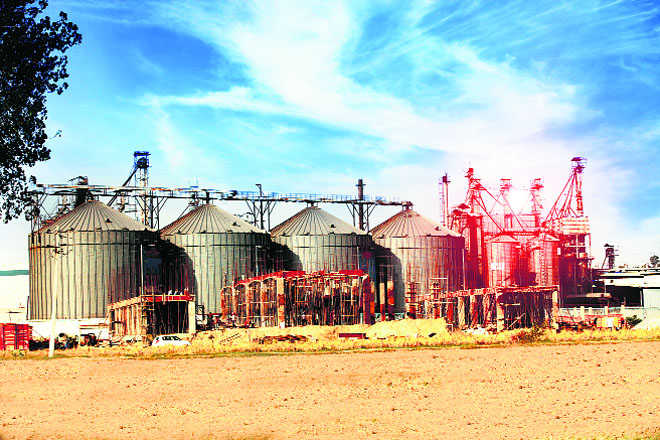
All is not well with India's basmati exports. Disillusioned farmers increasingly prefer the rice varieties that come with the MSP cover over unpredictable basmati crops. Weary of exorbitant power tariff and high market fees, basmati rice millers, particularly in Haryana, have seen the closure of about two dozen mills in past couple of years.
Haryana charges 4 per cent market fee from millers, which is high compared to 1 per cent in Delhi, 2.5 per cent in UP and 1.6 per cent in Rajasthan. There is no market fee in Bihar. Although Punjab also charges a 4 per cent fee, it is fully refunded against exports.
Another major factor that erodes competitiveness of Haryana's millers is the cost of electricity. "When we are moving towards a uniform tax system, then why are we not adopting the same policy in electricity supply rates?" the All India Rice Exporters Association President Vijay Setia asks. Haryana charges almost Rs 8 per unit, double than the rate prevailing in many other states such as Maharashtra.
Basmati export is also on shaky ground because of the US' tirade against Iran, a major market for the aromatic Indian rice. India's basmati exports declined by 43,000 tonne to 7.55 lakh tonne in April-May 2018 compared with 7.98 lakh tonne in the corresponding period last year due to above-mentioned reasons.
Although there is a decline in the volume of basmati rice exports, situation is not that bad in terms of value. Basmati worth Rs 5,427 crore was exported in the first two months of the current financial year, which is 6 per cent more than the same period the previous year. A decline in the export quantity is, however, a concern.
Besides high power tariff and marketing fee, millers and exporters of Haryana, the biggest exporter of basmati rice, are hit by regulatory issues abroad. Indian export consignments are often rejected in certain overseas markets due to high pesticide residue. The problem starts from the fields in Punjab and Haryana where ill-informed farmers use pesticides and other chemicals in excess.
Indian exporters face excess residue problem mainly from the European Union, the US and some other countries as they frequently change their norms of maximum residue limit (MRL) in rice, often without any scientific proof. Solution lies in educating the farming community about the appropriate use of pesticides and fertilisers. Companies dealing in pesticides and fertilisers should also help in educating the farmer.
Haryana leads the country in rice milling, with about 175 units engaged in the processing of basmati. Punjab is the second biggest producer with 125 such units. The two states account for more than 60 per cent of basmati exports from the country. Basmati was grown on around 6.5 lakh hectare in Haryana and 5.6 lakh hectare in Punjab last season. Western Uttar Pradesh, Uttarakhand, Jammu & Kashmir, Himachal Pradesh and Delhi also grow basmati.
The industry does not seem optimistic about exports of basmati rice in 2018-19. "It will depend on the Iran factor, a major importer of Indian basmati rice," says Kohinoor Foods Joint Managing Director Gurnam Arora. According to Vijay Setia, the newer European residue norms may also impact exports. Stricter regularisation of pesticides domestically is needed, he adds.
The export industry also fears that the shrinking basmati cultivation would adversely impact the supply situation that could be met by other basmati exporting countries like Pakistan. Farmers of Punjab and Haryana are losing interest in basmati cultivation because of the government's assured procurement guarantee for other variety of rice through the MSP. Basmati farmers are left at the mercy of private purchasers. That is why basmati cultivation in Punjab is on the decline, says Arhtiya Association Punjab President Ravinder Cheema. In 2016, the production of basmati in the state was around 25 lakh metric tonne, which slipped to 18 LMT in 2017, and it is estimated that its production will further drop to around 15 LMT this year, Cheema claims.
Basmati varieties
29 notified basmati rice varieties
- Some examples -- Basmati 217, Dehraduni,
- Bauni, Kasturi, Mahi Sugandha, Taraori,
- Ranbir, Pusa 1460, Pusa 1401,
- Punjab Basmati-2, IET 21665
The GI tag
- Basmati rice became a registered GI product of India from 2016
- It is cultivated in India for centuries
- GI recognised states: Punjab, Haryana,
- HP, Uttarakhand, Delhi, Western UP, J&K
Exports
- India is the world's largest exporter of basmati rice
- India exports to Saudi Arabia, Iran, UAE, Iraq, Kuwait, UK, USA, Italy, France
- Other exporting countries Pakistan & Nepal
— With inputs from Parveen Arora in Karnal and Parvesh Sharma in Sangrur



























